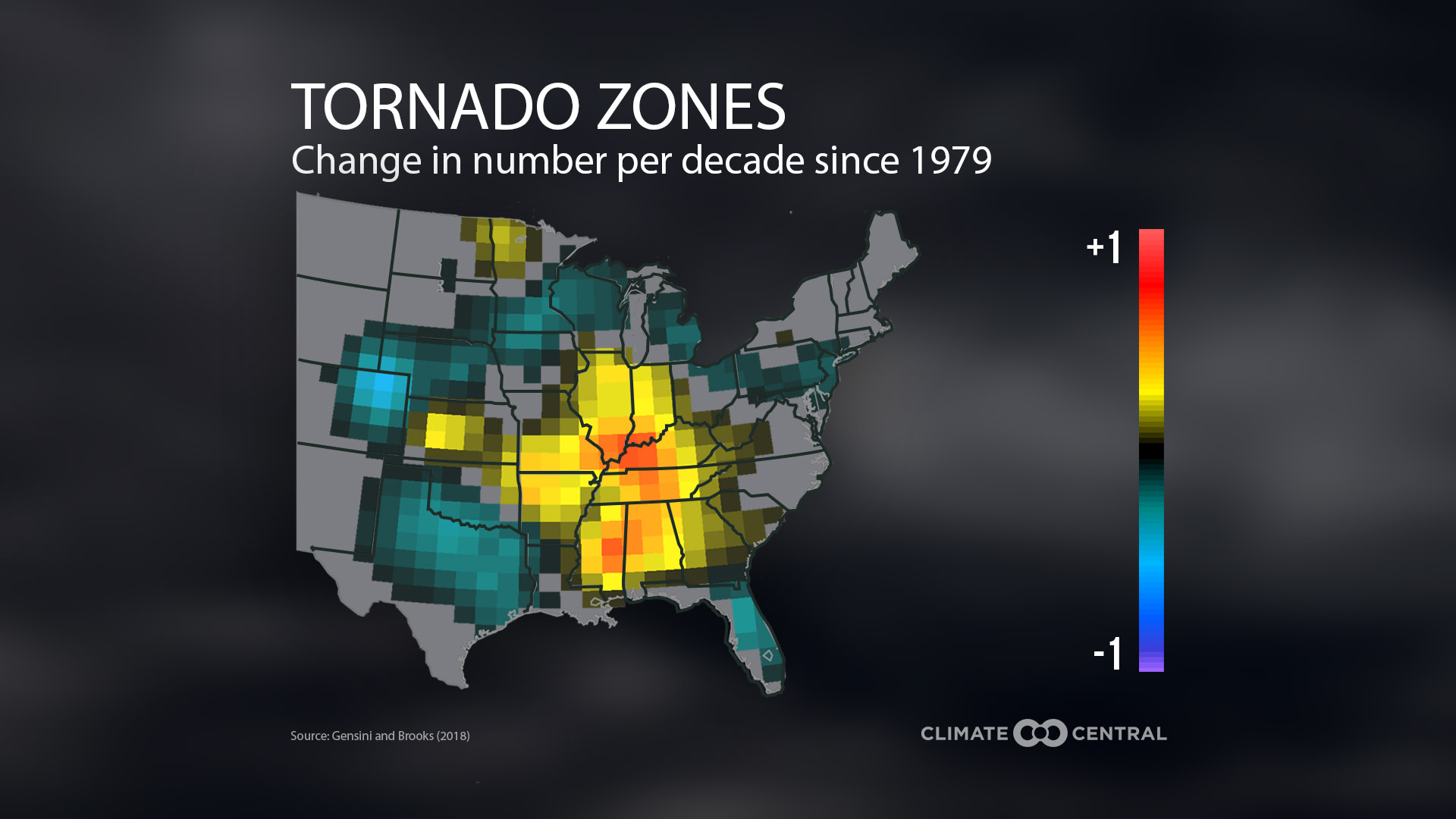After a relatively quiet 2018, this year’s tornado season is already making an impact. More than 200 tornadoes have already occurred in the U.S. in 2019. Even though a warming climate provides more energy for the thunderstorms that spawn tornadoes, it’s still unclear how climate change is affecting wind shear — the necessary spin that generates tornadoes. How tornadoes react to a changing climate continues to be vigorously researched, and some trends are surfacing.
There has been a subtle but detectable increase in tornado risk over the past few decades. Let’s be clear, tornadoes are not going away in the Plains and Upper Midwest, but more have been recorded east of the Mississippi. While there are connections to climate variability modes like ENSO, these overall trends are consistent with an eastward shift in the drier climate zone of the western U.S. and with climate change projections indicating that severe storm environments will become more common in the eastern U.S.
The number of tornadoes in large tornado outbreaks is also on the rise. In one study defining an outbreak as having six or more tornadoes in a six-hour period, there are about five more E/F1+ tornadoes in the largest outbreaks now than in the 1950s, and another study showed that the number of days with 30+ tornadoes has also been increasing. One possible reason for the increase is that the weather environments that produce severe storms are occurring more often.
In addition to the changing geography and number of tornadoes, there is a shift in the time of year they occur. On average, tornadoes are starting about a week earlierin the year in the tornado alley region from Nebraska to Texas, and summer tornadoes are declining nationwide. But in the colder months between November and February, tornado frequency has increased, especially in the Southeast. More troubling, nighttime tornadoes, which are more than twice as likely to cause fatalities, are more common during these colder months of the year. Given the complex, forested terrain and high density of mobile homes in the Southeast, this region is especially vulnerable to these overnight storms.
Methodology: Tornado outbreaks follow the definition set by Tippett et al (2016) of six or more tornadoes in six consecutive hours nationwide. Thanks to the Michael Tippett and Chiara Lepore for providing SPC tornado count data. Tornado climatology is based on Gensini and Brooks (2018) (DOI: 10.1038/s41612-018-0048-2). Special thanks to Harold Brooks and Victor Gensini for their guidance with this Climate Matters.
